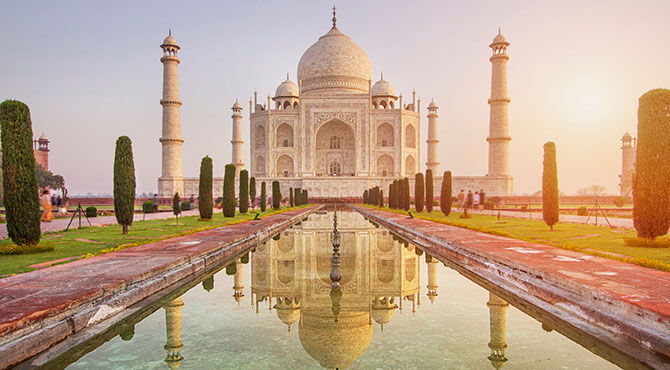IKAN report: The history of corruption in India
Corruption in India has had a profound affect on life and business there. Rohit Kumar of IKAN Relocation Services examines the history of corruption and what has been done to combat the problem.

Diversity and corruption in India
To understand the advent of corruption in India and to grasp its influence on society as a way of life, one must understand India’s history. India is a young country. It gained its independence in 1947 after 200 years of British rule.The British came to India via the East India Company and over the decades they came to realise that India was neither a geopolitical entity nor culturally homogeneous.The combined influences of a shift in focus from trade to territory, and from commerce to political and military power – rife with the corruption of its private stockholders – further divided an already diverse region. The thousands of small kingdoms that made up the geography of Bharat (India) became weaker and more corrupt as the years went on, in a way embedding the virus of corruption in India. In 1947, finding itself reduced in power and ability after the Second World War, the British Empire left India. Governance came into the hands of the first prime minister of India, Jawaharlal Nehru. In an effort to completely eradicate Western influence, he made a strategic decision to adopt a socialist approach vis-à-vis the economy.What followed over the next five decades was painfully slow economic growth. Heightened government controls resulted in reduced economic opportunities. Increases in population, low per capita income, and slow GDP all combined to create near hyperinflation.Low salaries of government employees (such as bureaucrats and the police), excessive regulations, complex tax and licensing systems, opaque bureaucracy, lack of opportunities, discretionary powers, government monopoly, and an antiquated legal system with a lack of transparent laws and processes only further exacerbated an already tainted and corrupt system.Since 2005, India has ranked around the middle (90th out of 180 countries) on Transparency International’s table of perception of corruption index. Activities of corruption in India include the misuse of public property for private gain and have ranged from embezzlement of public money to abuse of power (including bribery).The path of India’s liberalisation
Increased globalisation, greater access to global media and reporting and the work of organisations such as Transparency International continued to expose corruption. While India was slowly improving its standing – challenging and questionable practices endured in many sectors of the government, including hiring practices, measurement, and recording in civil supplies departments and property tax assessments.Studies by the Comptroller and Auditor General of India have repeatedly shown that the most severe levels of corruption could be found in customs, revenue collection, public works, and agencies in charge of licenses and permits.The Central Vigilance Commission was created in 1964 and put in charge of implementing the Prevention of Corruption Act, focusing on high officials. Although over the years the powers and mandate of the commission have been increased to make it more effective, its focus is still more on bureaucracy than politics.In 1992, India found itself nearly bankrupt and in severe debt, and under pressure from the World Bank, the country was forced to liberalise its economy. What followed from there is the stuff of legend. Today, one might say that concept of India is 500 years old, and the nation itself is 70 years old, but its economy is only 25 years old. In this short period, India doubled its economy, carved out a niche for itself as a software provider to the world, and produced thousands of millionaires.The path of liberalisation and the accompanying riches unfortunately did not free India of corruption, but continued to fuel the fire. Truckers out on India’s highways pay billions of rupees every year in bribes. Bureaucrats sitting in monopoly positions make it more difficult to do business in India by creating stringent and complex compliance requirements that are difficult or impossible to achieve. Tax authorities seek new ways to benefit from the increased wealth of taxpayers, who in turn invent creative ways to evade the tax. Corrupt politicians and industrialists joined forces, influencing public thinking and sentiments through media houses owned by them. What followed over the last two decades were such widely reported controversies as the Commonwealth Games and AgustaWestland scams, and numerous allegations and arrests involving politicians and representatives from the fodder, telecom, and coal industries.Related stories from India:
- Cultural challenges in India for the international assignee
- Asian universities 'luring back expat academics' from UK
First steps against corruption
As with many revolutions, one person or event is later regarded as the spark that illuminated the path to significant change. In 2011, social activist Kisan Baburao “Anna” Hazare began a hunger strike that ignited a nationwide anti-corruption movement and led to the introduction of the Jan Lokpal Bill (Citizen’s Ombudsman Bill).While perhaps not revolutionary in the traditional sense of the word, many would regard the 2014 election of Narendra Modi as prime minister as trigger to significant change. The defeat of the longest-serving political party of India – the Indian National Congress – in favour of a new name and voice from the Bharatiya Janata Party, and its securing of 282 seats in the general election, took many pundits by surprise. Analysts have suggested that that victory was attributed to both the popularity of Modi and the loss of support for the Congress due to the corruption scandals in its previous term, among other things, including the Hazare movement itself.The saying that power corrupts, and absolute power corrupts absolutely, however, the largest democracy in the world had elected a new face, a new name, and brought to power a new party, and with it hopes for a more transparent chapter.Modi came to power after a strong performance as a state chief minister and receiving credit for policies to promote economic growth and efforts to combat corruption in his home state of Gujarat. He focused his first attentions on the bureaucracy, and bureaucrats started reporting to work on time.In 2016, Modi did the unthinkable and took an action that amounted to using a brahmastra (weapon of annihilation in ancient Sanskrit writings). He demonetised the 1,000-rupee and the 500-rupee notes and replaced them with fresh currency. These denominations made up 90 percent of the currency in circulation in India, and citizens were given 40 days to deposit any cash they possessed into their banks. If the currency being deposited was unaccounted for, they had to declare it and pay taxes and penalties amounting to 50 per cent of the money. In case there was no declaration, penalties as high as 90 per cent and other charges would apply.Modi’s stated targeted goals are multi-focused:- Eradicating fake currency being pumped into India to fund terror attacks and separatist activities.
- Bringing unaccounted-for and inactive currency into the banking system and hence increasing rotation and tax collections
- Cutting the flow of cash in the system and hence reducing costs of real estate and land, making them more affordable
- Flushing banks with cash, thus reducing the cost of borrowing and creating an impetus to spending and a kick-start to manufacturing
- Making digital transactions the norm
Corruption and poverty
There is no doubt that poverty and corruption are linked. In 2003, only 15 per cent of the government’s anti-poverty funds reached the poor. Anti-corruption laws have existed since 1968, supported by agencies such as the Central Bureau of Investigation and the Central Vigilance Commission, but a lack of agency independence and a natural hesitancy to self-police or incriminate have resulted in many failures to enforce these laws effectively.Not only does corruption in India worsen poverty, but it also drags the whole country’s development down through resource depletion. Nevertheless, India has been developing and growing at a rate higher than almost any other country in the world. If corruption were completely eradicated, the rate of India’s economic growth could be in double-digit figures.India and the relocation industry
The relocation industry in India, like all business sectors, is not immune from the negative impact of corruption. Organisations and individuals alike must be well informed about and aware of the risks – whether related to permitting and registration, service rates, or actions that could be construed as bribery. As globalisation continues to promote more movement into, out from, and within India, going in with open eyes, trusted service and legal partners, and a full understanding of compliance and risks will continue to promote greater transparency.Regardless of one’s political beliefs, we all aspire to experience an India, and ensure our children inherit a country, that will be inhabited by the rich – rich in culture, honesty, ethics, integrity, justice, practices, policies, and principles.Information provided by IKAN Relocation Services.For related news and features, visit our India section.Relocate’s new Global Mobility Toolkit provides free information, practical advice and support for HR, global mobility managers and global teams operating overseas. Access hundreds of global services and suppliers in our Online Directory
Access hundreds of global services and suppliers in our Online Directory
©2025 Re:locate magazine, published by Profile Locations, Spray Hill, Hastings Road, Lamberhurst, Kent TN3 8JB. All rights reserved. This publication (or any part thereof) may not be reproduced in any form without the prior written permission of Profile Locations. Profile Locations accepts no liability for the accuracy of the contents or any opinions expressed herein.





























